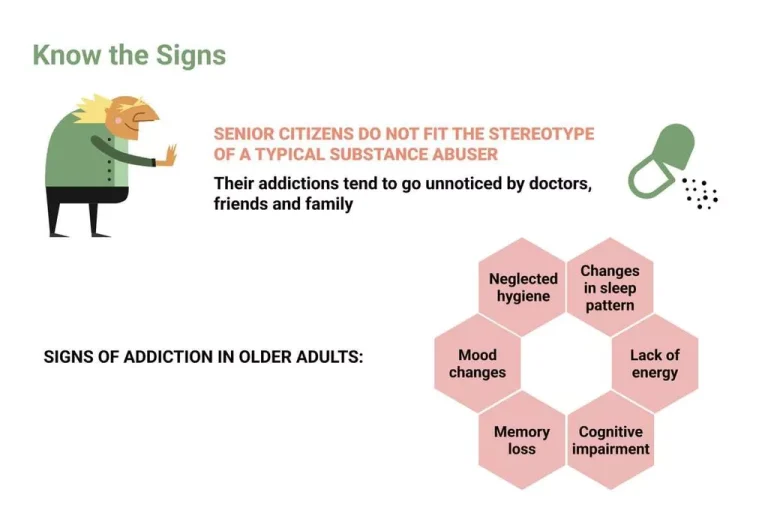
CHS is a condition caused by chronic and repeated cannabis use that leads to severe nausea and vomiting. Many researchers feel that CHS is underrecognized and underdiagnosed. Symptoms of CHS can resemble those of other conditions, such as cyclic vomiting syndrome. One theory behind CHS is that chronic overstimulation https://ecosoberhouse.com/ of the body’s endocannabinoid receptors leads to your body not being able to control nausea and vomiting. Two distinct cannabinoid receptors, CB1 and CB2, have been identified in human and animal models. The CB1 and CB2 receptors function as G-protein coupled receptors that act by inhibiting adenylate cyclase [7].
Cyclic Vomiting Syndrome (CVS)

An intriguing point to keep in mind is that the Rome IV criteria include the phrase “resembling cyclical vomiting syndrome.” In that regard, it is important to distinguish between the two. These episodes of vomiting are often separated by weeks or months, and there is a return to baseline between episodes. Importantly, for the definition of cyclic vomiting syndrome, these episodes of vomiting cannot be attributed to other disorders.
Symptoms and Causes
Probably, a crucial factor in the genesis of CHS is the composition of cannabis. Some individuals, for instance, also admitted to smoking 2000 mg of THC per day. They may also prescribe antipsychotic medications such as haloperidol (Haldol) or olanzapine (Zyprexa) to help you calm down as you switch to the recovery phase.
- Other known complications of forceful and uncontrolled vomiting include aspiration and subsequent pneumonitis or aspiration pneumonia as well as injury to the esophageal wall such as Boerhaave’s syndrome.
- In the early phase of CHS, the individual may experience more subtle abdominal pain and nausea, especially in the morning.
- As CHS is a relatively recently recognized and studied phenomenon easily confused with other diseases, there is a paucity of sizeable randomized control studies.
- One study found that 32.9% of self-reported frequent marijuana users who came to an emergency department for care met the criteria for CHS.
- They can begin as mild problems that make you feel sick in the morning.
Cannabis Hyperemesis Syndrome (CHS)
These supportive treatments can help people during the hyperemesis stage of the condition, but recovery depends on the person stopping their use of marijuana. They also experience episodes of vomiting that return every few weeks or months. While symptoms can be managed, the only way to stop CHS for good is to quit cannabinoid hyperemesis syndrome using cannabis in any form. Addiction rehab programs or CBT may be helpful resources for quitting cannabis. Speak with a doctor or healthcare professional if you or someone you know has symptoms of CHS. To help you transition to the recovery phase, you can try a few home remedies such as regular hot baths.
Prodromal stage
Cannabinoid Hyperemesis Syndrome (CHS) is a medical condition believed to be connected to heavy, chronic cannabis use. It is characterized by episodes of nausea and vomiting, which may be relieved by hot baths and showers or by discontinuing cannabis use. Very little is known about this condition, including its causes, but researchers hypothesize that an oversaturation of cannabinoid receptors in the body could lead to these complications. Others suspect that certain pesticides used in cannabis cultivation might be the cause. In clinical practice CHS is most often confused with cyclic vomiting syndrome (CVS). In fact patients with CHS are often mislabeled as having CVS and vice versa.
- With the large prevalence of marijuana use in the world, why does it appear that so few patients develop CHS?
- The most important thing to make CHS better is stopping marijuana use.
- CHS is a condition caused by chronic and repeated cannabis use that leads to severe nausea and vomiting.
- It is important for people with CHS to stop using marijuana because this will resolve their nausea and vomiting.
Cannabinoid Hyperemesis Syndrome Diagnosis
In one study, about 84% of people who received treatment for CHS stopped using cannabis, and of those, about 86% reported resolution of symptoms. One study found up to 6% of people who went to the emergency room for cyclical vomiting had CHS. The only way to end CHS symptoms is to completely stop using all marijuana products. After you quit, you may still have symptoms and side effects for a few days to a few weeks.
Can You Treat CHS Symptoms at Home?
Another proposed explanation is that in susceptible individuals the pro-emetic effect of cannabis on the gut (e.g. delayed gastric emptying) overrides its anti-emetic CNS properties [62]. This hypothesis is supported by the demonstration of delayed gastric emptying on gastric emptying scintigraphy in some cases [6,55,62]. Further research is required to investigate the gastrointestinal physiology in these patients during both the acute attacks of hyperemesis and between episodes. There exists no epidemiological data regarding the incidence and prevalence of CHS among chronic marijuana users. The syndrome is likely underreported given its recent recognition [74,75]. With the large prevalence of marijuana use in the world, why does it appear that so few patients develop CHS?
It is often described as a syndrome that affects only a small portion of people who are heavy, chronic cannabis users. However, research suggests that it could be far more prevalent and may continue to increase due to factors like the legalization of marijuana and the increased use of medical marijuana. It is important for people with CHS to stop using marijuana because this will resolve their nausea and vomiting. Preventing dehydration and stopping nausea and vomiting are the treatment goals during the hyperemesis stage of the condition. One doctor reported using injectable lorazepam to help control nausea and vomiting symptoms in an adult. Within 10 minutes, nausea and vomiting stopped, and the person no longer felt abdominal pain.
What are other impacts of cannabis use?

The third phase is the recovery phase, which is a return to normal behavior. With the changing climate of marijuana laws, it is an important condition to consider when establishing a differential. More studies will be required to evaluate the overall prevalence of this condition as well as if there are any changes following the liberalization of marijuana laws in many states.
This factor is a key distinguishing feature from cannabis hyperemesis syndrome, where the toxicokinetics of cannabis itself influence the course of the disease. In the early phase of CHS, the individual may experience more subtle abdominal pain and nausea, especially in the morning. The condition seems to intensify over the course of months or years, and symptoms may escalate to more debilitating nausea, episodic vomiting, abdominal pain, weight loss, and dehydration. One hallmark characteristic of Cannabinoid Hyperemesis Syndrome is the alleviation of these acute symptoms with hot baths or showers.
